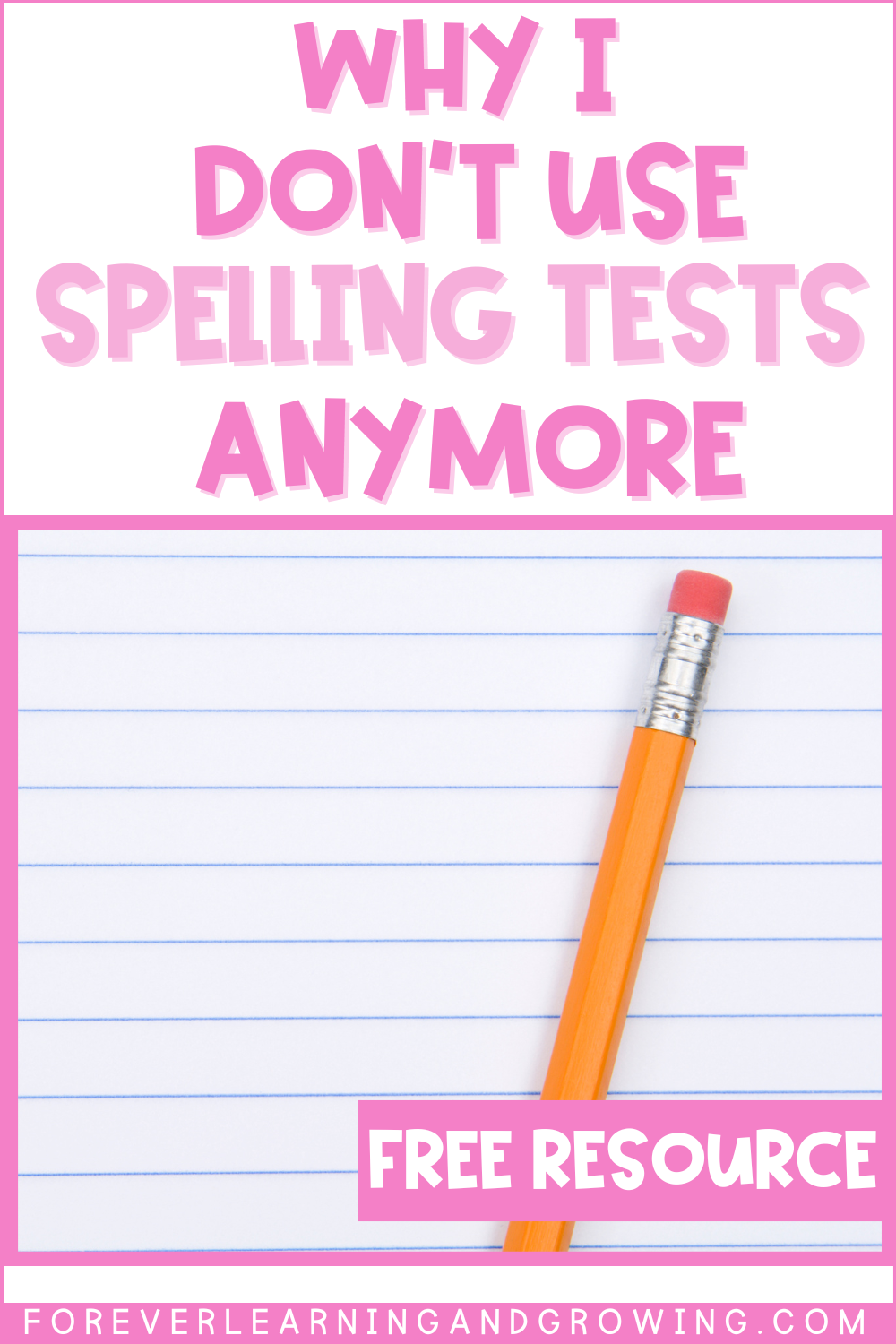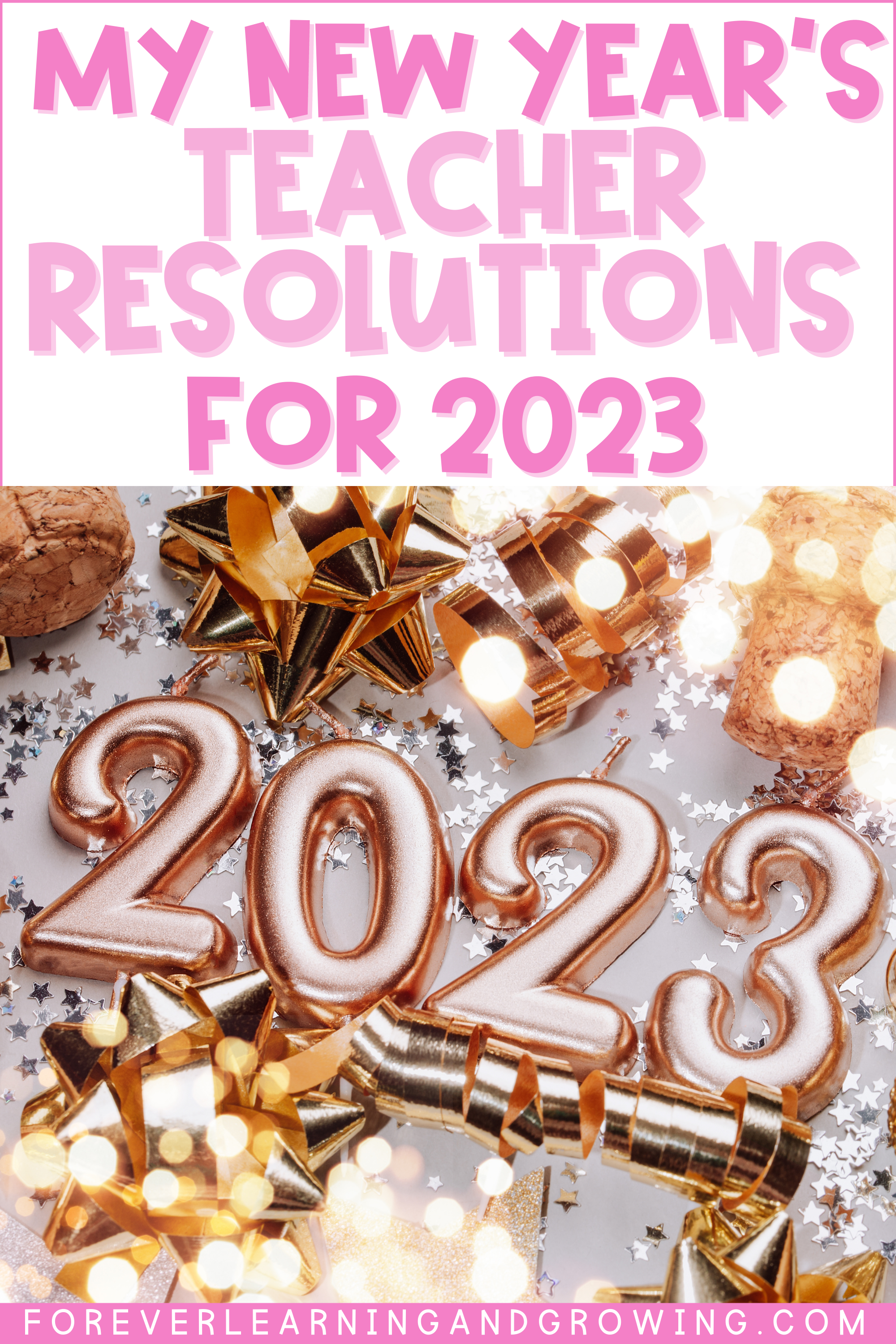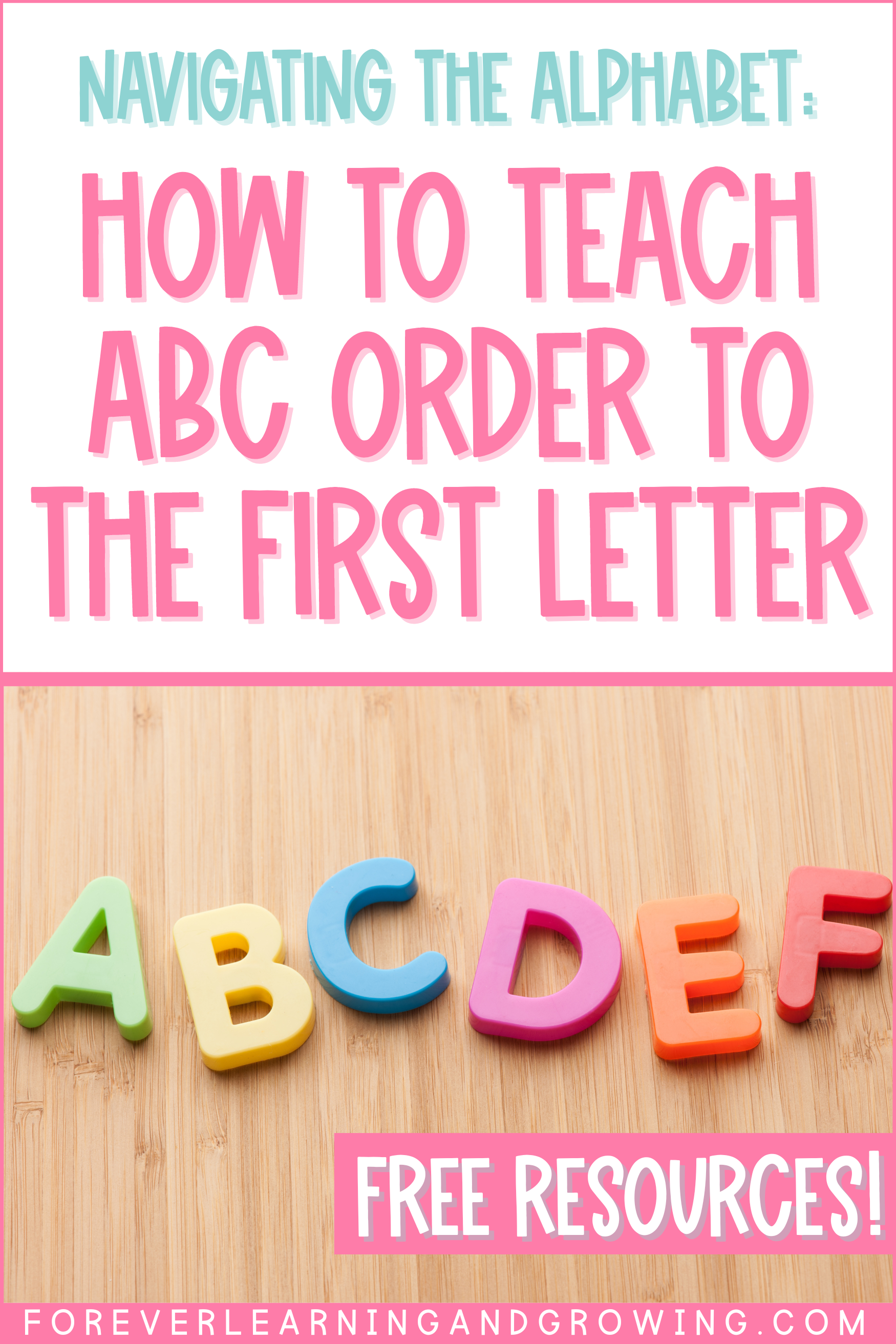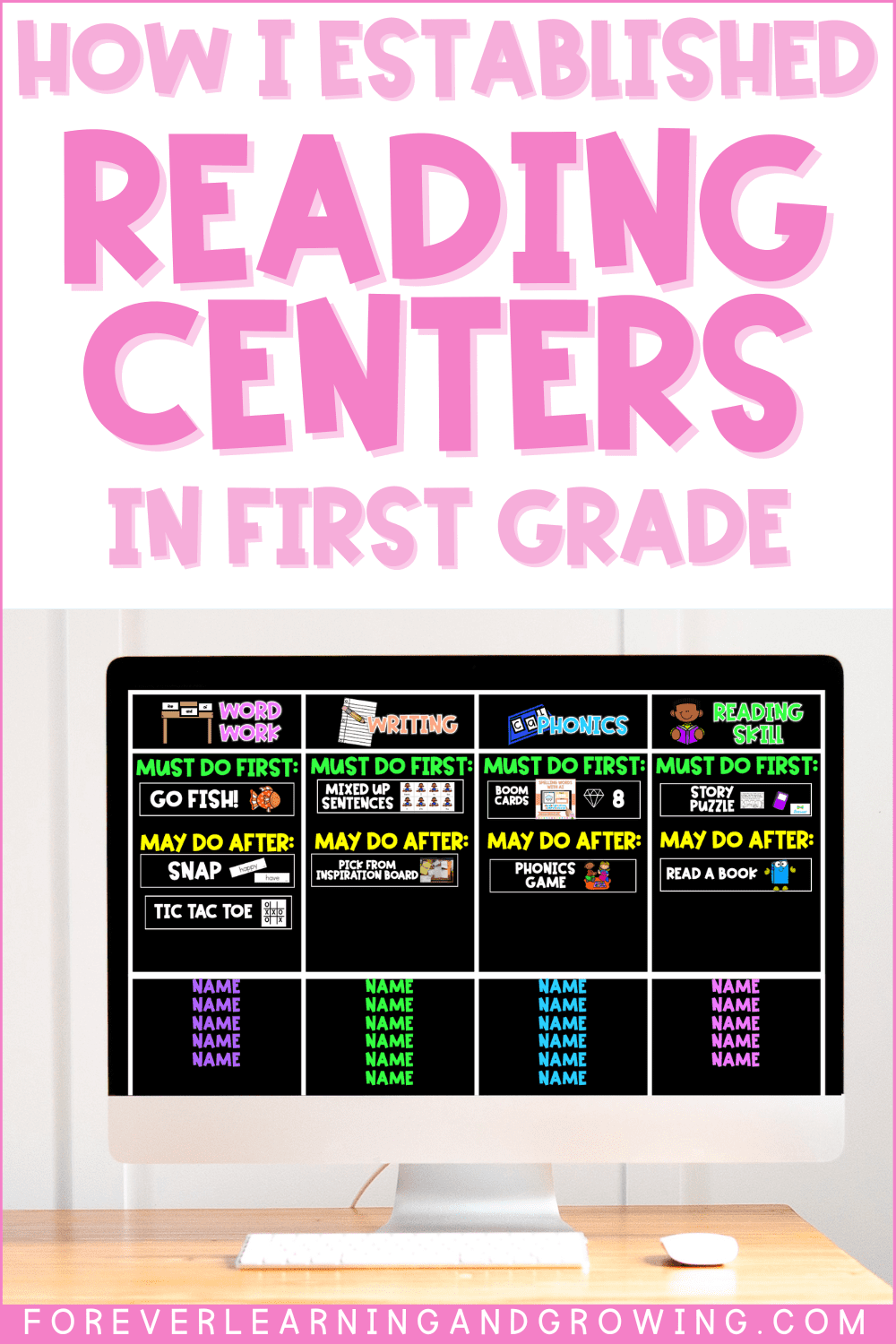Why I Don’t Use Spelling Tests Anymore
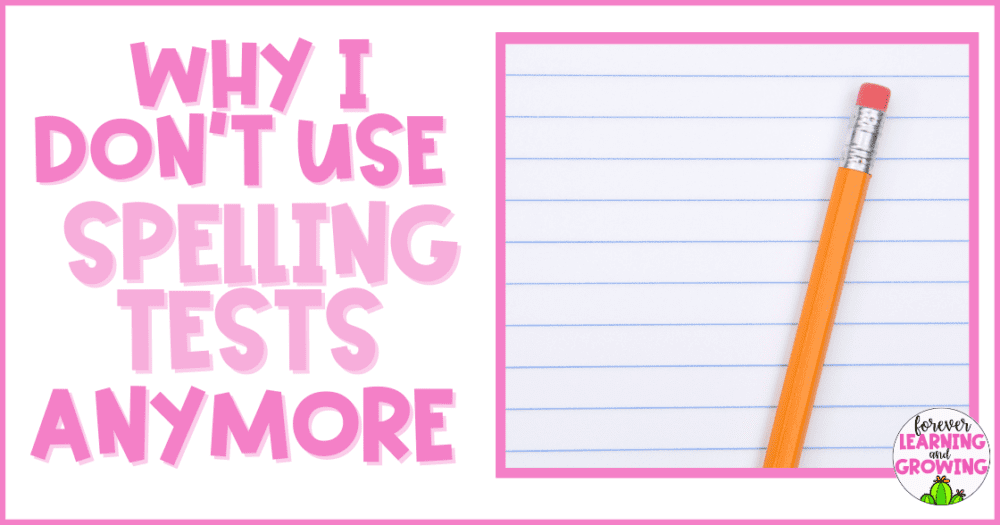
As an educator, my primary goal is to foster a love for learning and equip my first-grade students with essential skills that will serve them throughout their lives. Over the years, I have come to realize that traditional spelling tests are simply not best practice. Memorizing isolated words without comprehending the underlying rules can really limit students and hinder their growth. As a result of this shift in mindset, I don’t use spelling tests and instead have embraced what I call “phonics checks” to create a more meaningful and empowering learning environment for my young learners.
Why I Don’t Use Spelling Tests
Traditional spelling tests often center around memorization. Students are given a list of words to learn, often without understanding the phonics rules that govern their spelling. As a result, students may accurately spell the words on the test but struggle with unfamiliar words outside the context of the test (or even forget how to spell these words shortly after). This limited approach to learning can hinder their overall reading and writing abilities, which is why I don’t use spelling tests.
I am the perfect example of this. I’m a pretty good test taker because I have an excellent short term memory. In college, I could cram and study for a test for a day or two and ace it. When I took World Geography, I was able to label every country in the entire world on a blank map. Sadly, today I wouldn’t even come close! Why? I was just memorizing what I needed to for my quiz but not in a meaningful way that would stick with me.
The same is true with phonics and spelling for me. Growing up, I did great on spelling tests and could memorize words. But it wasn’t until I became a teacher, and even until three years into my teaching career, that I learned why some words are spelled how they are. I was fortunate to learn from an amazing mentor and reading teacher six years ago that helped transform how I teach phonics. Once I learned there was a reason why certain words started with a c or k, my mind was blown (I thought you just had to memorize which one you used)!
The Power of Phonics-Based Learning
Phonics-based learning is a foundational approach that helps students understand the relationship between letters and sounds. By teaching phonics rules, students gain the ability to decode words, enabling them to read and spell with more independence and confidence. Unlike rote memorization, phonics-based learning encourages critical thinking and problem-solving skills as students apply their knowledge to new words. It is because of this that I don’t use spelling tests and instead use what I call “phonics checks”.
Phonics Checks
Phonics checks have replaced spelling tests in my first-grade classroom. Instead of providing students with a list of words to memorize, we have a phonics “focus” or pattern for the week that goes along with our curriculum. We start off with short vowels, then I teach the -ck rule. Afterwards we go into digraphs, blends, magic e, and so on.
If our focus is on “short a” for the week, we start off by learning the sound that short a makes & any rules that apply to it. We do a practice together on Mondays where I say a few words with short a, students attempt to spell it themselves, and then we go over the answer together, which they can then fix. I send this practice home to parents so they know what we are working on for the week and at the bottom I have a few more words for parents to reference at the bottom that go along with that pattern. Parents and students do not know what words are on the “phonics check” each week– only that they follow the pattern we are learning & are similar to the practice page.
The rest of the week we have lots of practice with this pattern during our phonics block– I dictate words & sentences with short a that students practice writing, we go through a decodable story with the pattern, and students have center activities related to the phonics pattern as well.
On Friday, students have 10 words and a sentence on their phonics check. Words 1-6 are related to the pattern (for the short a example it might be cat, fan, tap, lab, sat, mad) and then words 7-10 are our 4 sight words for the week. Students always know what these 4 words will be, and we let students use their word wall for the sight words (they just have to be able to find the word themselves on the word wall– so, for example, they’d need to know the word of doesn’t start with “u”).
Lastly, I dictate a sentence that only uses decodable words from patterns that have been taught and sight words taught already in first grade or in kindergarten. An example of a sentence for this pattern would be- The cat had a mat. The dictated sentences are great practice for students to correctly write sentences starting with a capital, using finger spaces, writing on the lines, and ending with punctuation.
Each week we build on the previous patterns. If I’ve already taught students the -ck rule and short vowels, I can make “block” a word we practice with l blends because they’ve learned if a word is 1 syllable, has a short vowel, and ends with the /k/ sound, we use ck at the end. (-ck is one of the first “rules” I teach each year and you would not believe the amount of kids who come up to me excited they found a word with -ck in their book or who listen carefully and see in a book I’m reading out a word with -ck.
Learning the “why” behind how things are is empowering. I love seeing students apply the rules we are learning during phonics in their own writing. I tell the parents in my classroom each year that I will not count off for spelling and I really encourage them to not spell things for their children. Instead, I encourage students to sound it words out and apply the rules we have learned.
Do they misapply rules? Absolutely! But if I can tell that a student has attempted to sound a word out and apply what they’ve learned as they spell, I am happy! Over time, their understanding will become more concrete and as they read more books and are exposed to more words, they’ll be used to seeing those “rule-breaker” words and remember how to spell them correctly. The English language is confusing and they’re not going to master it in first grade!!
Phonics checks promote a deeper understanding of language by encouraging students to recognize patterns, blends, and phonetic combinations. They also give me great insight into which students I need to support more with certain patterns. As they become more proficient in decoding words, they can independently read and spell words they have never encountered before. This sense of mastery builds their confidence and inspires a love for language and reading. It also encourages students to be critical thinkers and helps to develop their confidence not only in their spelling but also in their writing abilities. It’s because all of these reasons that I don’t use spelling tests anymore.
Phonics Practice in Centers
As I mentioned above, I have a phonics center my students go to each week. Whatever the pattern is for that week, the activities incorporate that focus so students get additional exposure & practice with that rule. I love to incorporate hands-on phonics activities as well as digital ones. Every week, my students start by doing “Spelling Practice” on Boom Cards.
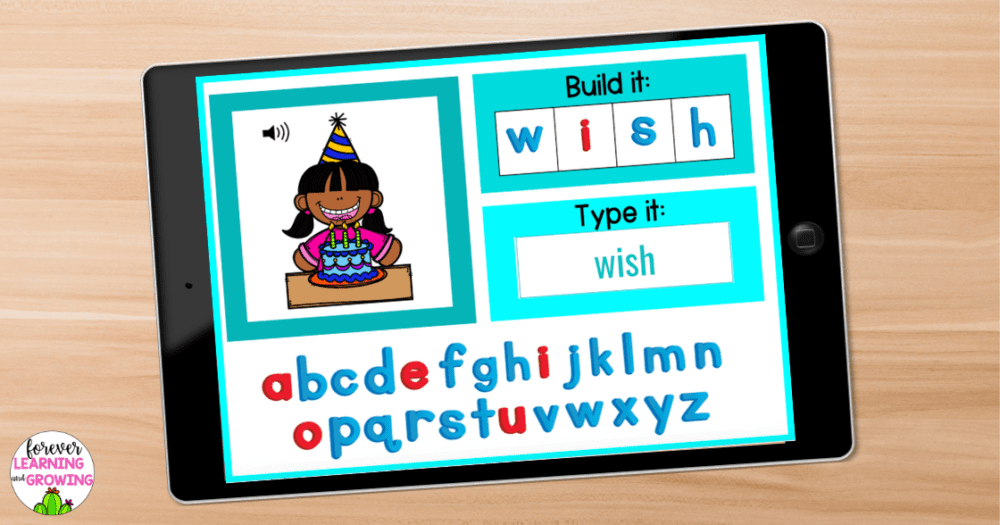
I created decks for each of our spelling patterns for the year. Each deck has 10 cards. Students listen to me say the word and can see a visual of that word. They then have to drag letters to spell the word and then type it. All 10 words follow the pattern of the week. I tell my students they have to earn 8 diamond points (80% correct) to move on to the next phonics activity, to ensure they are understanding the rule. These Boom Cards have been a tremendous addition to our phonics center, as they provide targeted practice on our phonics focus each week.
Be sure to check out my First Grade Spelling Practice Boom Cards Bundle for more information as well as all of my phonics center activities.
Interested in trying out one of these Spelling Practice Boom Cards for free? You can grab a FREE CVC Words deck to try out in your classroom!
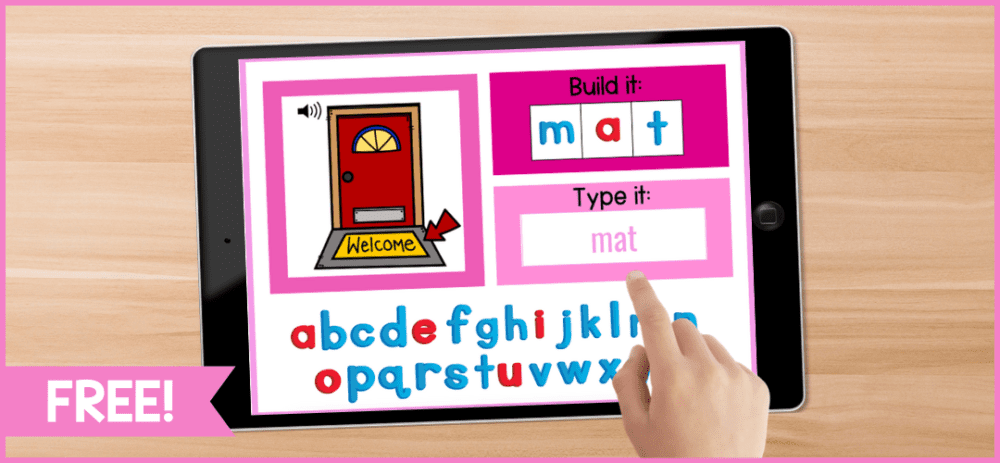
Fostering Lifelong Learning
The benefits of phonics-based learning extend beyond first grade. By laying a solid foundation of phonics rules, students are better equipped to navigate language throughout their academic journey and into adulthood. Phonics becomes a valuable tool they can rely on for a lifetime of learning.
Transitioning from traditional spelling tests to phonics checks has been a transformative journey for both myself and my first-grade students. As educators, it is our responsibility to create an environment that fosters true understanding rather than superficial memorization. By prioritizing phonics-based learning, I have witnessed the blossoming of confident readers and writers who approach language with curiosity and enthusiasm. What more can a teacher ask for?

Want to save this pin for later?
